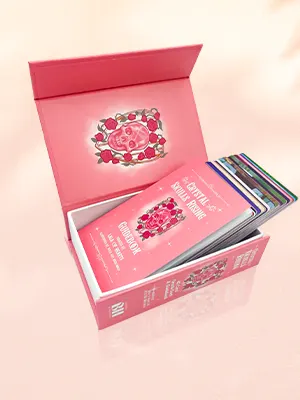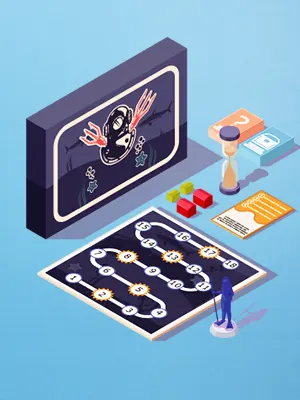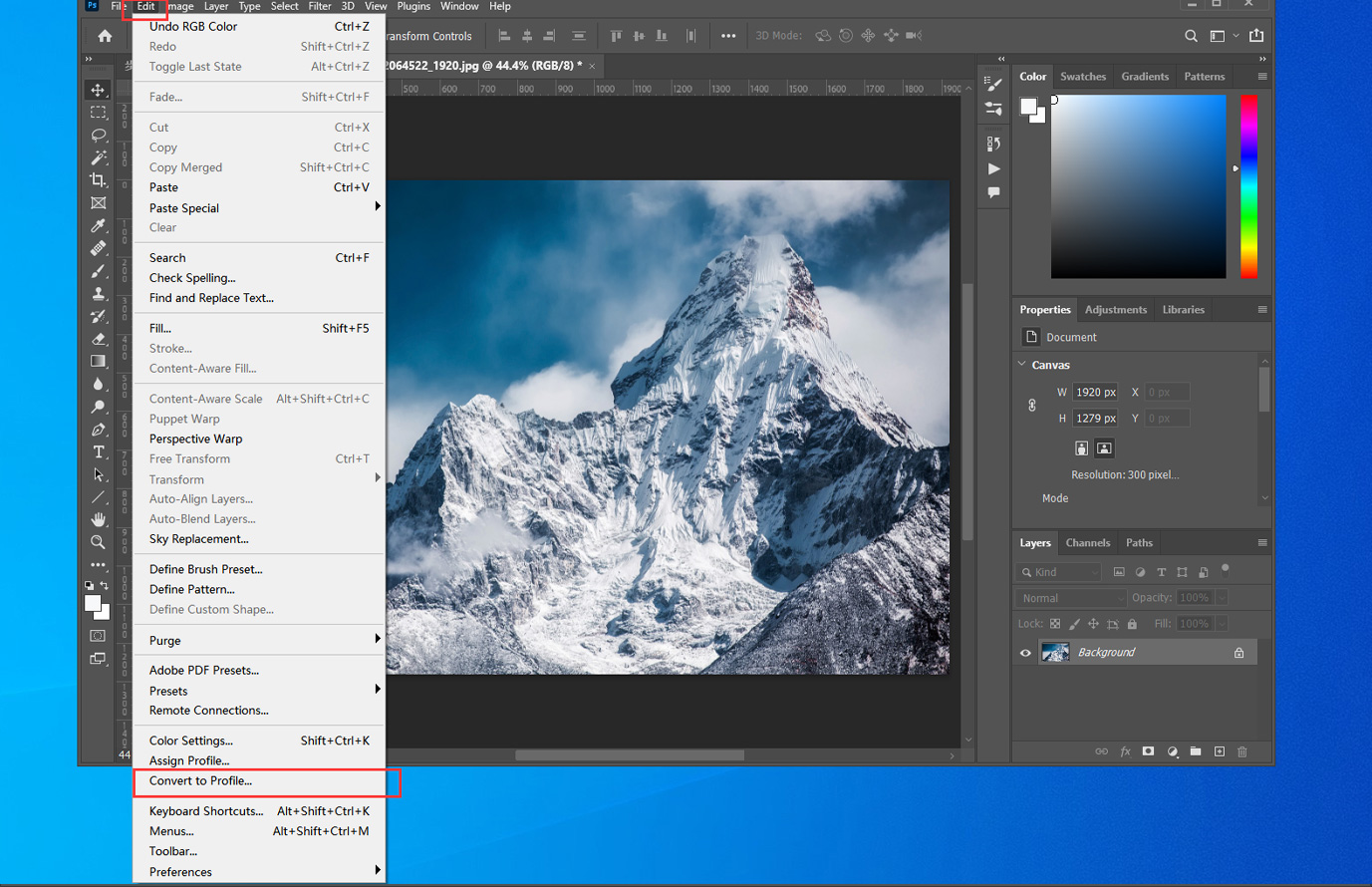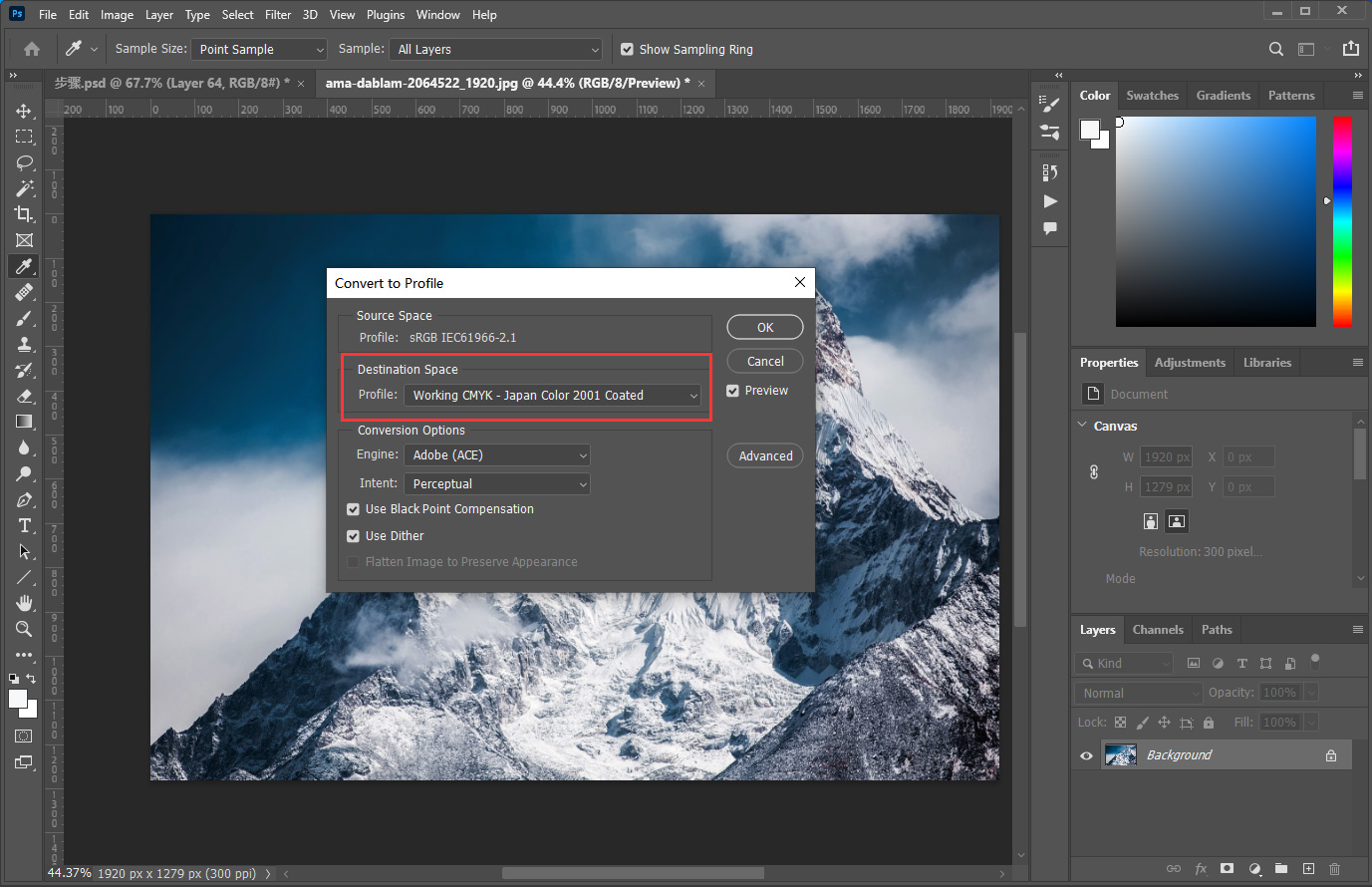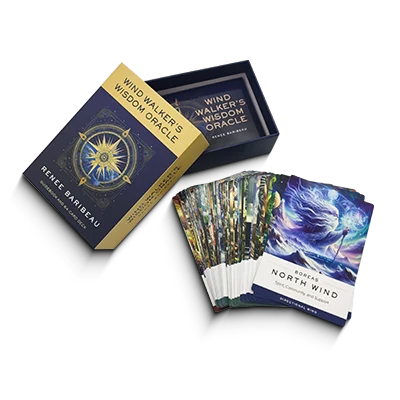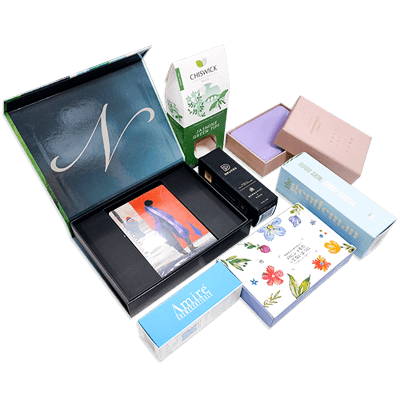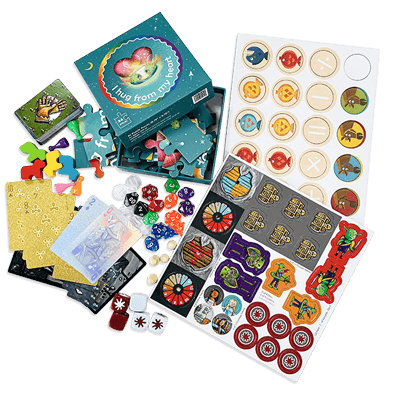CMYK and RGB
We clear up the confusion about the meaning of color spaces or modes and the differences between RGB, CMYK, and the importance for design and printing.

What Are the CMYK and RGB Color Spaces?
CMYK and RGB are two fundamental color spaces used for different purposes. CMYK stands for Cyan, Magenta, Yellow, and Black—with “K” representing the “key” color, black. It is a subtractive color system commonly used in printing. CMYK works by blending inks that absorb (subtract) certain wavelengths of light and reflect others, producing physical colors on paper or other materials.
On the other hand, RGB stands for Red, Green, Blue and is an additive color system used primarily for screens like computers, TVs, and monitors. RGB creates colors by emitting light at different frequencies through tiny pixels or dots. The more colors you add in RGB, the lighter and brighter the resulting image becomes.
Because these systems work fundamentally differently—subtractive vs. additive—the colors you see on a screen (RGB) often look different from printed colors (CMYK). While digital designs are usually created in RGB mode, printing requires converting those colors to CMYK, where inks mix to reproduce the desired image on paper.
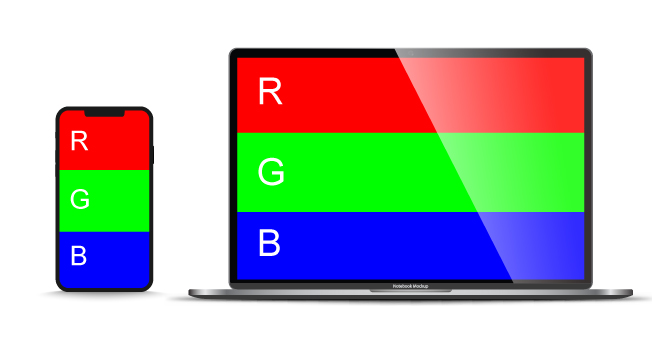
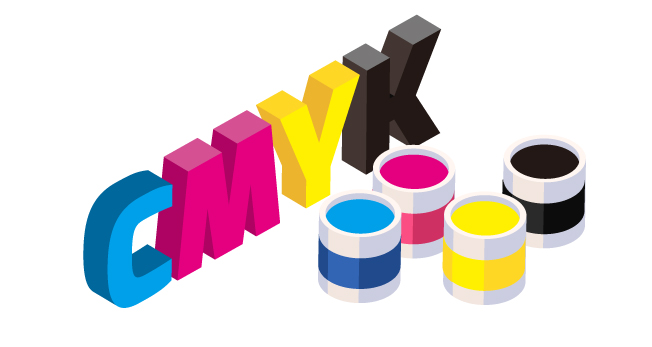
Which Color Space Do Printers Use?
Offset printing necessarily needs to use a material color system to print on paper. A printing machine creates images by combining CMYK colors to varying degrees using physical ink. That’s why we use CMYK for printed materials. It’s also why, if you’ve been designing in RGB mode, you’ll need to convert your color space to CMYK when preparing your files for printing.
Which Color Profile Is Used for Printing?
CMYK: Japan Color 2001 Coated
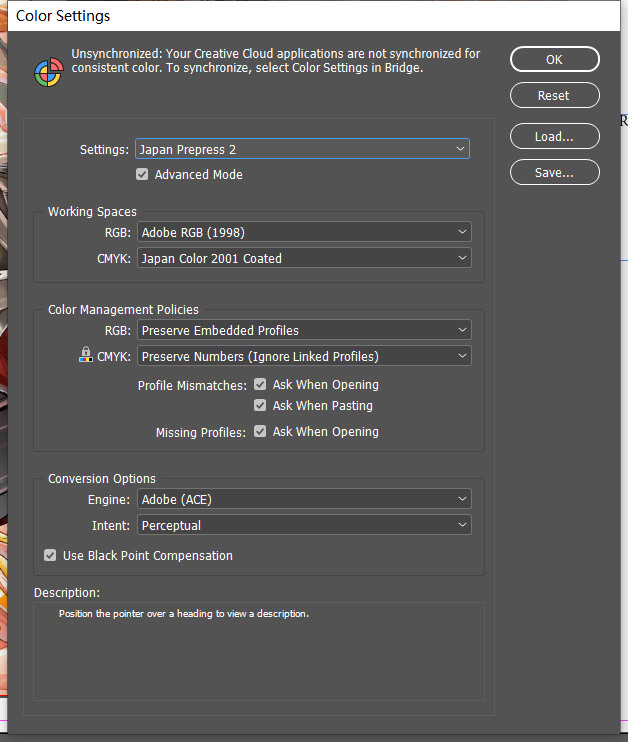
How to Convert RGB to CMYK
Before you edit the artwork in any design software—such as InDesign and Illustrator, which we recommend—you need to convert the photos from the RGB format to CMYK.
2. Choose the Profile: Japan Color 2001 Coated, then click OK.
CMYK is the default color option in InDesign. But whatever software you choose, it’s best to select the CMYK color space at the outset and work with it throughout your design process.
If you would prefer, you can send us the original printing files, including all fonts and photos, and we’ll handle the color conversion for you.
What Happens When Artwork Is Printed in RGB Color Mode
The difference between the color spaces of RGB and CMYK is vitally important because RGB colors can’t always be accurately reproduced in print. At best, if you tried, you’d get a dull, muddy version of your original and in the worst case, colors may even appear different in print compared to how they did on your screen. So, we strongly recommend that you design in CMYK from the outset.
Why Are Printed Colors Different Than on the Screen?
RGB on the screen, and CMYK in ink on paper, create color perception by opposite means. So, RGB emits light. That gives it access to the whole “gamut” of possible colors in the visible spectrum. Whereas CMYK creates color perception by materials (inks) which absorb some frequencies of reflected light. This difference means that some colors simply cannot be reproduced on the page. But, if we convert the color spaces, we can get very close; so much so, that the viewer can’t tell the difference. But if you reproduce the same image from the screen to ink and paper without converting, the difference is often striking.
Common CMYK Colors Chart
For all the reasons explained above, recreating colors on the printed page is a challenging task and requires skill and professional expertise. But with decades of experience and the continually evolving print technologies we have available; we’ve developed a vast array of reliable color mixes that work well with offset printing. The chart below shows several CMYK color matches which will go a long way toward helping you.
CMYK Red

M: 100
Y: 0
K: 0

M: 90
Y: 0
K: 0

M: 80
Y: 0
K: 0

M: 70
Y: 0
K: 0

M: 60
Y: 0
K: 0

M: 50
Y: 0
K: 0

M: 40
Y: 0
K: 0

M: 30
Y: 0
K: 0

M: 20
Y: 0
K: 0

M: 10
Y: 0
K: 0

M: 100
Y: 100
K: 0

M: 90
Y: 80
K: 0

M: 80
Y: 70
K: 0

M: 70
Y: 60
K: 0

M: 60
Y: 50
K: 0

M: 50
Y: 40
K: 0

M: 40
Y: 30
K: 0

M: 30
Y: 20
K: 0

M: 20
Y: 10
K: 0

M: 10
Y: 5
K: 0

M: 100
Y: 0
K: 0

M: 90
Y: 0
K: 0

M: 80
Y: 0
K: 0

M: 70
Y: 0
K: 0

M: 60
Y: 0
K: 0

M: 50
Y: 0
K: 0

M: 40
Y: 0
K: 0

M: 30
Y: 0
K: 0

M: 20
Y: 0
K: 0

M: 10
Y: 0
K: 0

M: 100
Y: 100
K: 0

M: 90
Y: 80
K: 0

M: 80
Y: 60
K: 0

M: 70
Y: 40
K: 0

M: 60
Y: 30
K: 0

M: 50
Y: 20
K: 0

M: 40
Y: 10
K: 0

M: 30
Y: 5
K: 0

M: 20
Y: 5
K: 0

M: 10
Y: 5
K: 0
CMYK Blue

M: 0
Y: 0
K: 0

M: 0
Y: 0
K: 0

M: 0
Y: 0
K: 0

M: 0
Y: 0
K: 0

M: 0
Y: 0
K: 0

M: 0
Y: 0
K: 0

M: 0
Y: 0
K: 0

M: 0
Y: 0
K: 0

M: 0
Y: 0
K: 0

M: 0
Y: 0
K: 0

M: 0
Y: 20
K: 0

M: 0
Y: 20
K: 0

M: 0
Y: 20
K: 0

M: 0
Y: 20
K: 0

M: 0
Y: 20
K: 0

M: 0
Y: 10
K: 0

M: 0
Y: 10
K: 0

M: 0
Y: 5
K: 0

M: 0
Y: 5
K: 0

M: 0
Y: 5
K: 0

M: 70
Y: 0
K: 0

M: 60
Y: 0
K: 0

M: 50
Y: 0
K: 0

M: 40
Y: 0
K: 0

M: 30
Y: 0
K: 0

M: 20
Y: 0
K: 0

M: 10
Y: 0
K: 0

M: 10
Y: 0
K: 0

M: 5
Y: 0
K: 0

M: 5
Y: 0
K: 0

M: 40
Y: 10
K: 0

M: 30
Y: 10
K: 0

M: 20
Y: 10
K: 0

M: 10
Y: 10
K: 0

M: 10
Y: 10
K: 0

M: 5
Y: 10
K: 0

M: 5
Y: 10
K: 0

M: 5
Y: 5
K: 0

M: 5
Y: 5
K: 0

M: 5
Y: 5
K: 0
CMYK Blue

M: 0
Y: 100
K: 0

M: 0
Y: 90
K: 0

M: 0
Y: 80
K: 0

M: 0
Y: 70
K: 0

M: 0
Y: 60
K: 0

M: 0
Y: 50
K: 0

M: 0
Y: 40
K: 0

M: 0
Y: 30
K: 0

M: 0
Y: 20
K: 0

M: 0
Y: 10
K: 0

M: 50
Y: 100
K: 0

M: 40
Y: 90
K: 0

M: 30
Y: 80
K: 0

M: 20
Y: 70
K: 0

M: 10
Y: 60
K: 0

M: 5
Y: 50
K: 0

M: 5
Y: 40
K: 0

M: 5
Y: 30
K: 0

M: 5
Y: 20
K: 0

M: 5
Y: 10
K: 0

M: 40
Y: 100
K: 0

M: 30
Y: 100
K: 0

M: 20
Y: 100
K: 0

M: 10
Y: 100
K: 0

M: 5
Y: 100
K: 0

M: 5
Y: 90
K: 0

M: 5
Y: 80
K: 0

M: 5
Y: 70
K: 0

M: 5
Y: 60
K: 0

M: 5
Y: 50
K: 0
CMYK Green

M: 0
Y: 100
K: 0

M: 0
Y: 90
K: 0

M: 0
Y: 80
K: 0

M: 0
Y: 70
K: 0

M: 0
Y: 60
K: 0

M: 0
Y: 50
K: 0

M: 0
Y: 40
K: 0

M: 0
Y: 30
K: 0

M: 0
Y: 20
K: 0

M: 0
Y: 10
K: 0

M: 0
Y: 80
K: 0

M: 0
Y: 70
K: 0

M: 0
Y: 60
K: 0

M: 0
Y: 50
K: 0

M: 0
Y: 40
K: 0

M: 0
Y: 30
K: 0

M: 0
Y: 20
K: 0

M: 0
Y: 15
K: 0

M: 0
Y: 10
K: 0

M: 0
Y: 5
K: 0

M: 0
Y: 100
K: 0

M: 0
Y: 90
K: 0

M: 0
Y: 80
K: 0

M: 0
Y: 70
K: 0

M: 0
Y: 60
K: 0

M: 0
Y: 50
K: 0

M: 0
Y: 40
K: 0

M: 0
Y: 30
K: 0

M: 0
Y: 20
K: 0

M: 0
Y: 10
K: 0

M: 40
Y: 100
K: 0

M: 40
Y: 90
K: 0

M: 30
Y: 80
K: 0

M: 30
Y: 70
K: 0

M: 20
Y: 60
K: 0

M: 20
Y: 50
K: 0

M: 10
Y: 40
K: 0

M: 10
Y: 30
K: 0

M: 5
Y: 20
K: 0

M: 5
Y: 10
K: 0
CMYK Black

M: 0
Y: 0
K: 100

M: 0
Y: 0
K: 90

M: 0
Y: 0
K: 80

M: 0
Y: 0
K: 70

M: 0
Y: 0
K: 60

M: 0
Y: 0
K: 50

M: 0
Y: 0
K: 40

M: 0
Y: 0
K: 30

M: 0
Y: 0
K: 20

M: 0
Y: 0
K: 10

M: 30
Y: 30
K: 100

M: 30
Y: 30
K: 90

M: 25
Y: 25
K: 80

M: 25
Y: 25
K: 70

M: 20
Y: 20
K: 60

M: 20
Y: 20
K: 50

M: 15
Y: 15
K: 40

M: 15
Y: 15
K: 30

M: 5
Y: 5
K: 20

M: 5
Y: 5
K: 10
Need More Help? Talk to Us!
All these facts about color spaces need to be kept in mind before designing your print materials. At QinPrinting, we pride ourselves on our first-class customer service and design support. If you have any further questions about RGB and CMYK color modes and conversion or other prepress issues, we’ve made it super-easy for you to get in touch with our expert design team by telephone, via email, Skype, the chat box, or the contact form. Talk to us!

